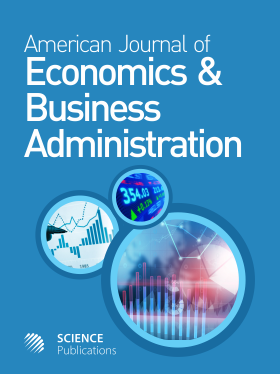Development or the Environment
- 1 Kiit University, India
Abstract
Problem statement: The relationship between trade and environment is very complex though development and environment are invariably related to each other. There is a close relationship between development and conservation of the environment. The relationship between the WTO and MEAs is reducing and eliminating barriers to trade in environmental goods and services. This relation was acknowledged in 1972 Stockholm Conference on Human Environment. Over the past 20 years, an extraordinary number of international environmental agreements have been concluded. Very few MEAs actually regulate trade or contain trade-related provisions. Theoretically, MEA trade measures and WTO rules can and should interact in a positive and synergistic way. Approach: The main aim of this paper/research is to find out whether the international law has any method of dispute resolution or a systematic approach towards the ongoing debate between the environment and trade which is interlinked in a very complex manner. The resolution of these complex inter-linkages has become a challenge which we have to face. Results: The author had tried to highlight the complex relationship of WTO-MEA where both the environment and trade policy makers prefer unilateral solution for the environmental problem. Resorting to such unilateralism can pose a risk of arbitrary discrimination. The source of the conflict between the WTO and MEAs lies within the measures contained in MEA's and WTO rules. For example, the violation of WTOs non-discrimination principle by MEAs. The two vital questions that occurred were whether trade measures under multilateral environmental agreements are compatible with WTO rules and If MEA-related disputes are brought to the WTO system, should the WTO discourse on the relationship between the WTO and MEAs? Conclusion: Both trade and environment are crucial for the well being of human society. What is most important is to strike a proper balance between free trade and environmental protection. There are a large number of multilateral environmental agreements. Although Special Trade Obligations (STOs) can be found in only a minority, these MEAs usually incorporate environmental norms that may result in clashes with trade norms of the WTO. One of the major steps is to control trade, as it is contributing to environmental damage. The other is by providing additional incentives to join MEAs and restricting non-parties to trade with parties in restricted goods. e.g., Montreal Protocol bans trade with non-parties in ozone-depleting substances. If a conflict arise in the future between the WTO Agreements and other rules of international law, WTO dispute settlement bodies will have to consider recognized rules under public international law to settle the conflict. In the context of a dispute between two WTO members, any WTO member that considers that any of its WTO benefits have been nullified or impaired it has an absolute right to trigger the WTO dispute settlement mechanism and request consultations and the establishment of a panel.
DOI: https://doi.org/10.3844/ajebasp.2009.257.262

- 5,066 Views
- 3,368 Downloads
- 0 Citations
Download
Keywords
- Inter-linkages
- multilateral trade agreements
- development
- world trade organization
